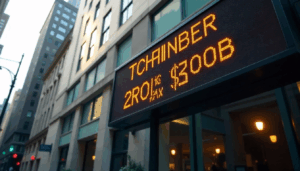Market Cap of Tokenized Treasuries Soars to $4.2B Amid Crypto Sell-Off and Increased Institutional Interest
Tokenized Treasuries Hit Record $4.2B as Crypto Investors Shift to Safer Assets
Ondo Finance, BlackRock-Securitize, and Superstate led the growth among major issuers, while Hashnote’s USYC faced declines.
As crypto markets endured a significant downturn in recent weeks, investors sought stability in tokenized U.S. Treasury products, driving their market capitalization to new heights.
Since late January, the total value of Treasury-backed tokens has increased by $800 million, reaching an all-time high of $4.2 billion, according to rwa.xyz.
Ondo Finance’s (ONDO) offerings—OUSG and USDY, both backed by short-term bonds—saw a 53% rise in market value, pushing their combined worth close to $1 billion. BUIDL, a token launched through a partnership between BlackRock and Securitize, surged 25% to exceed $800 million. Meanwhile, Franklin Templeton’s BENJI token climbed 16% to $687 million, and Superstate’s USTB jumped over 63% to $363 million.
Not all issuers experienced growth, however. Hashnote’s USYC token suffered a 20% decline, dropping to $900 million. The downturn was largely attributed to troubles with DeFi protocol Usual, whose USD0 stablecoin—primarily backed by USYC—saw its supply shrink from $1.8 billion in January to below $1 billion.
“The surge in tokenized treasuries during the latest crypto correction mirrors traditional investor behavior, where capital moves from riskier assets to U.S. Treasuries during uncertain times,” said Brian Choe, head of research at rwa.xyz, in a statement to CoinDesk.
Choe analyzed market trends and noted that during crypto’s bullish phase between November and January, stablecoins outpaced treasury-backed tokens in growth. However, during February’s correction, tokenized treasuries expanded at a faster rate, signaling a shift in investor sentiment.
“This suggests that rather than exiting the crypto space entirely, investors are reallocating funds into lower-risk, yield-generating assets while waiting for market stability,” Choe added.
Share this content:













